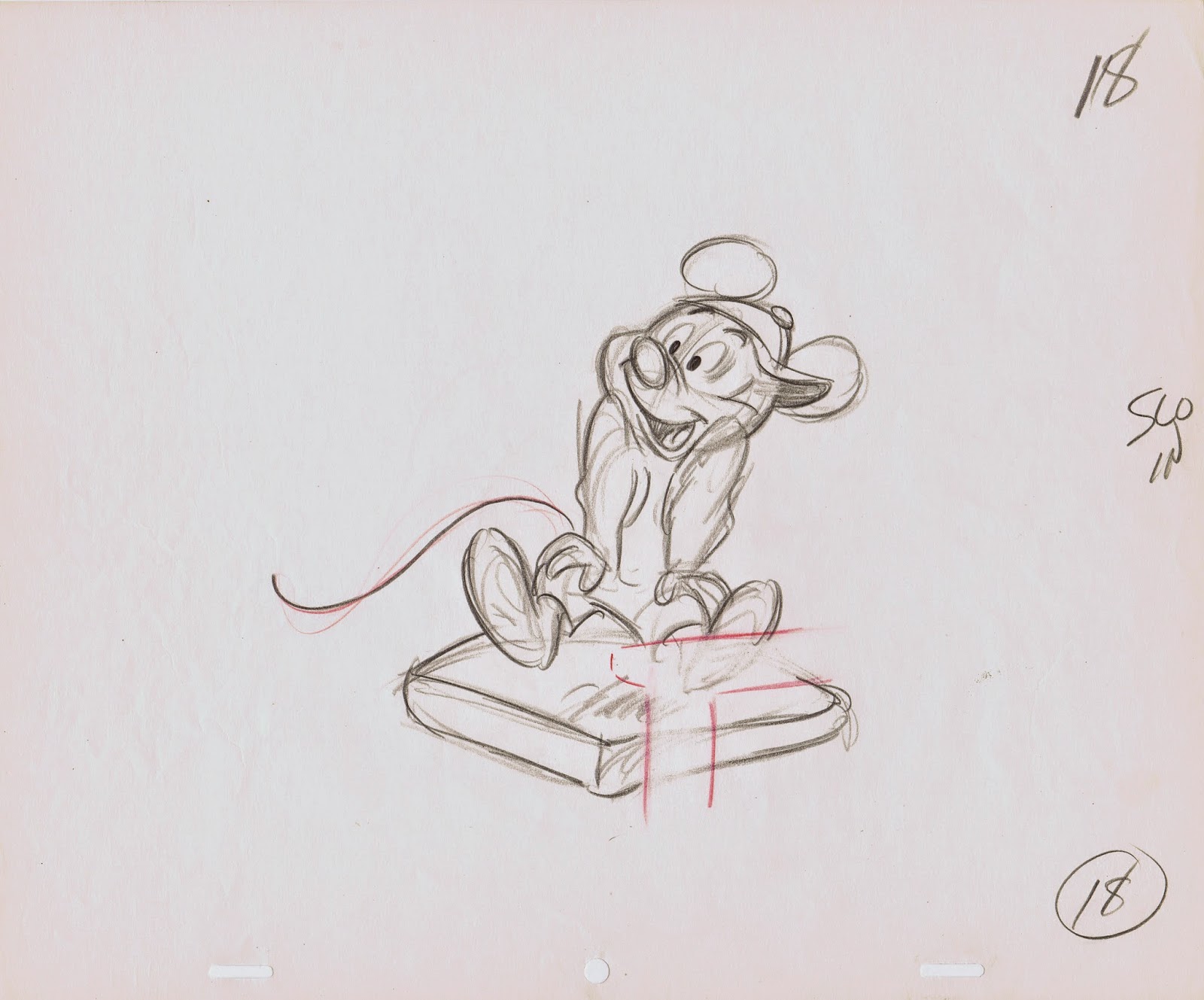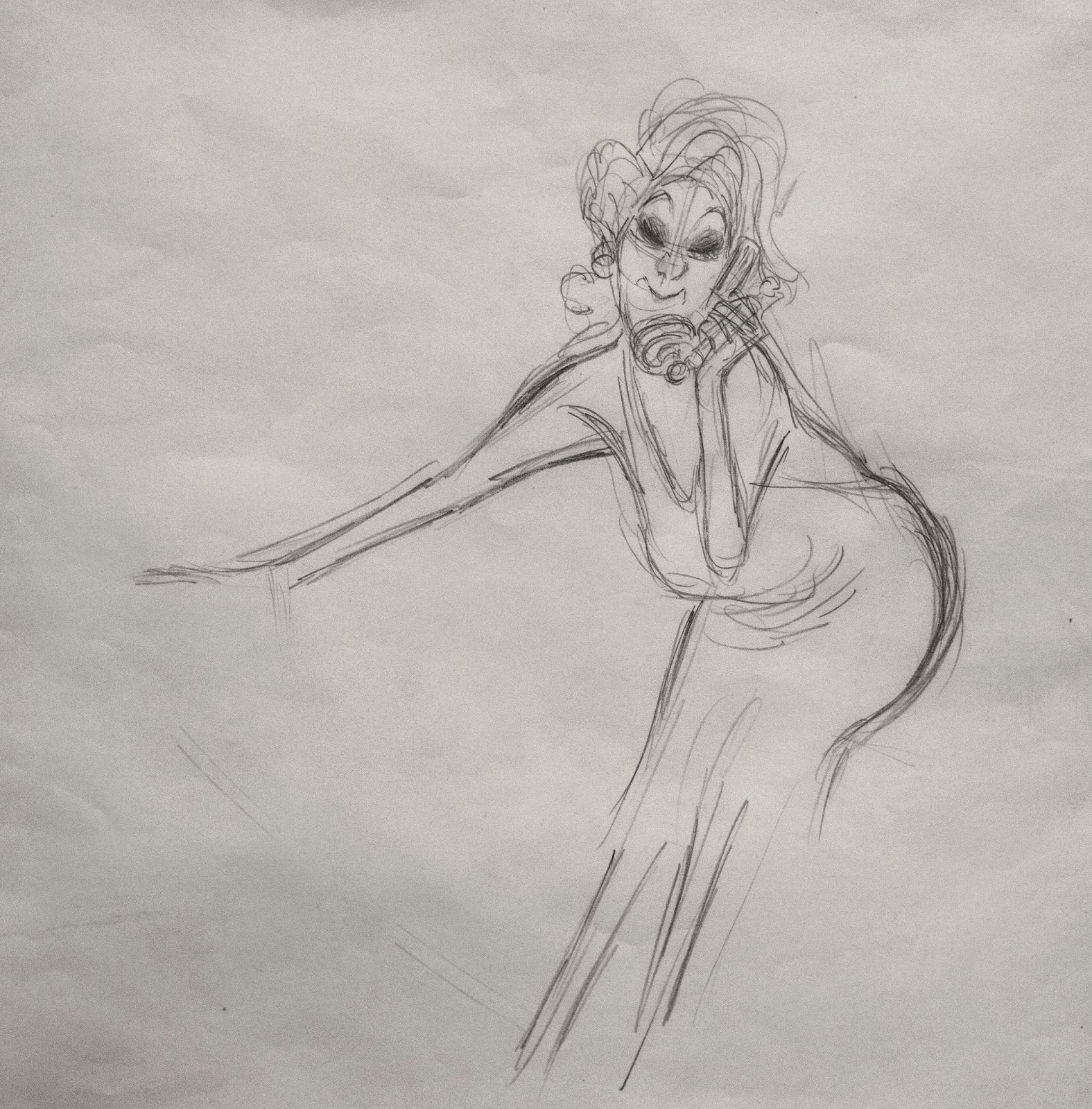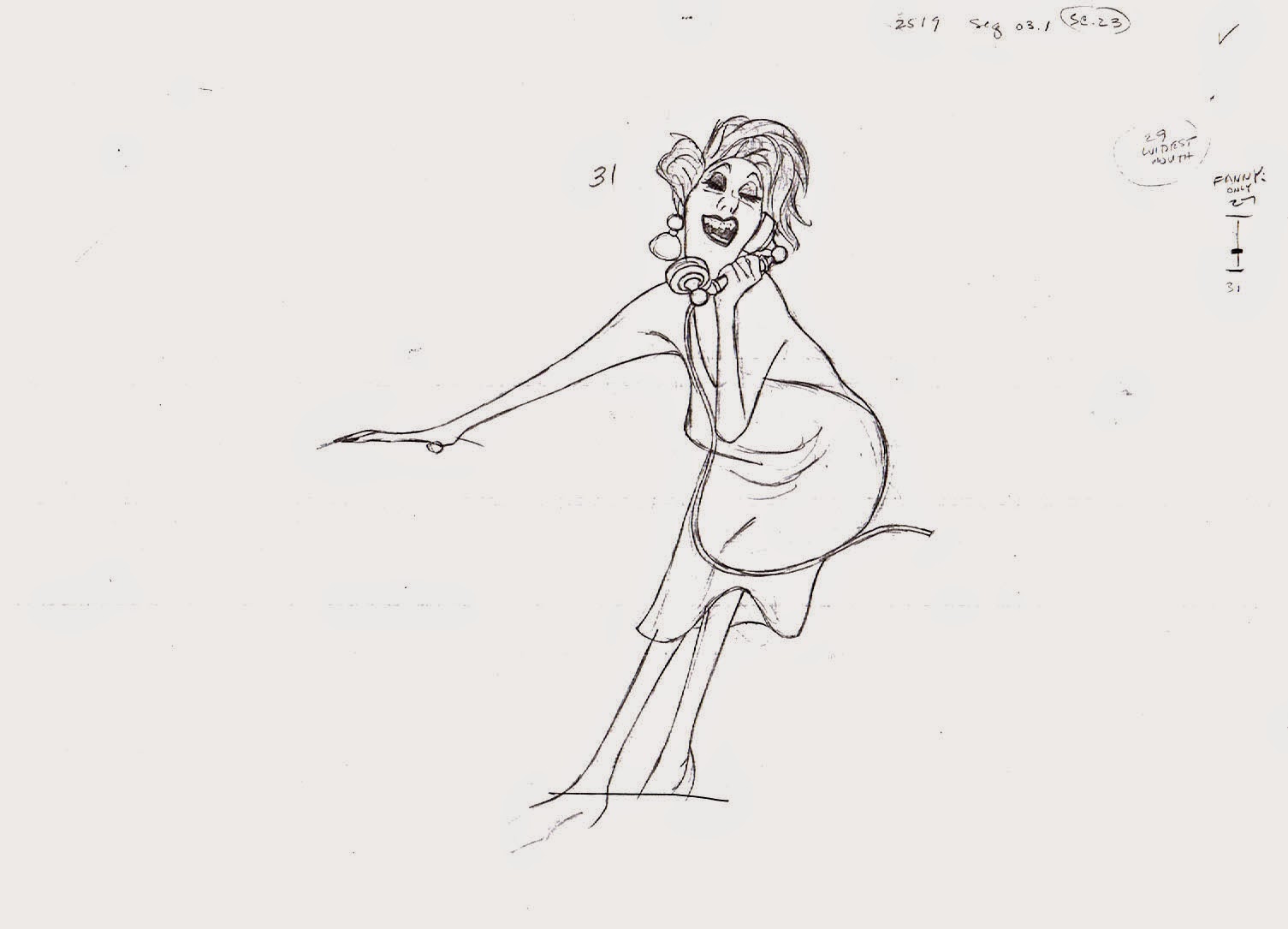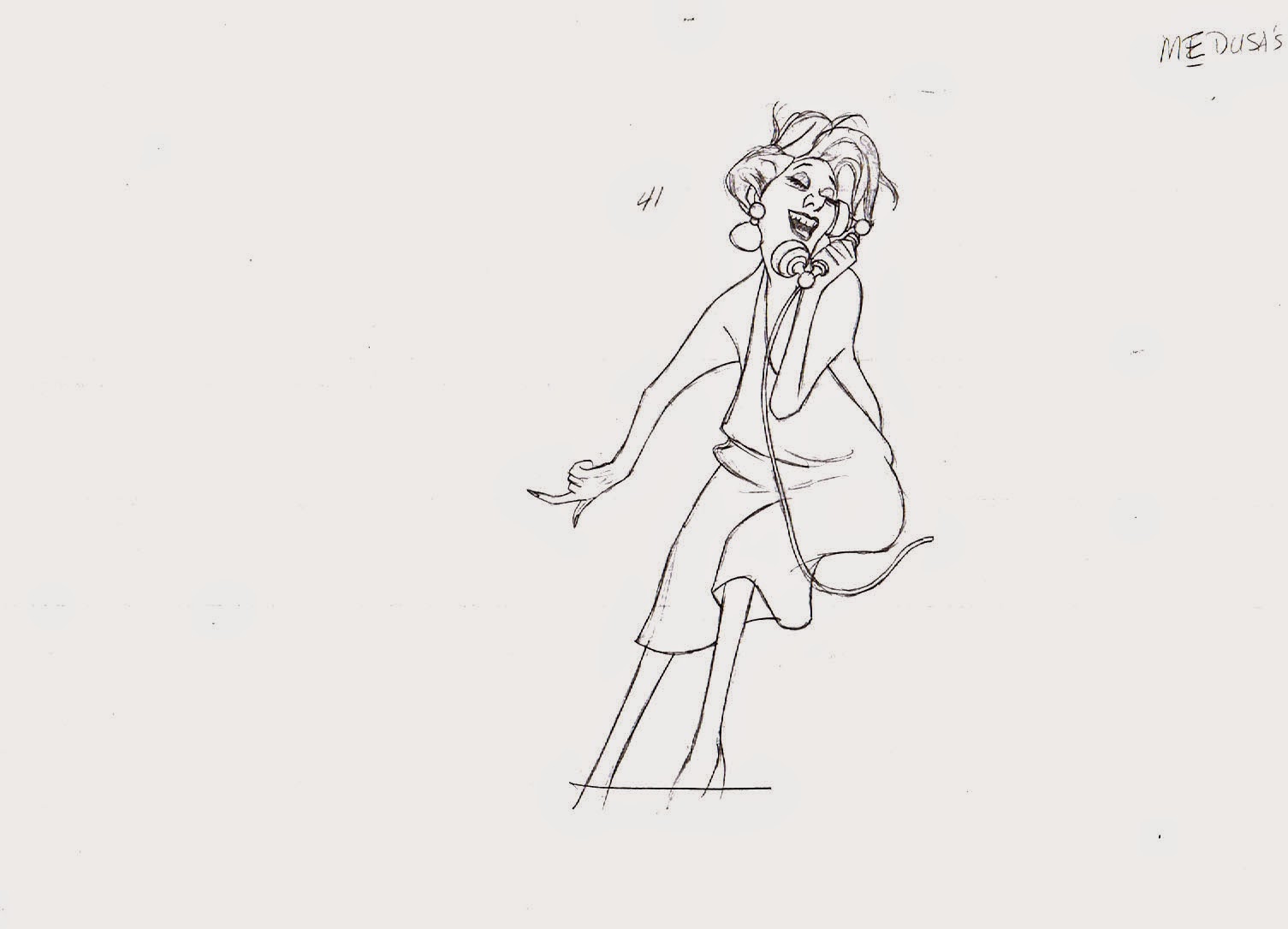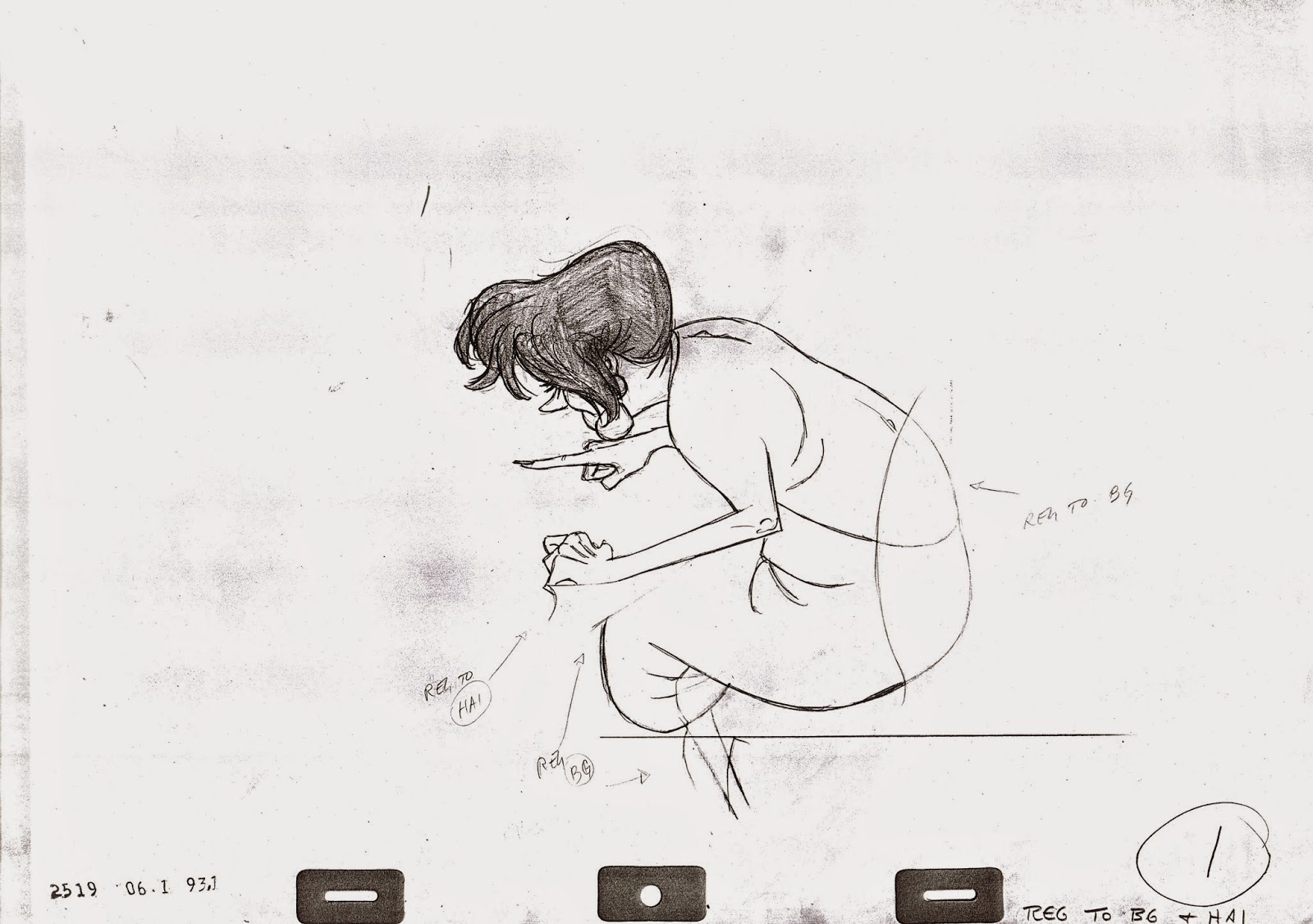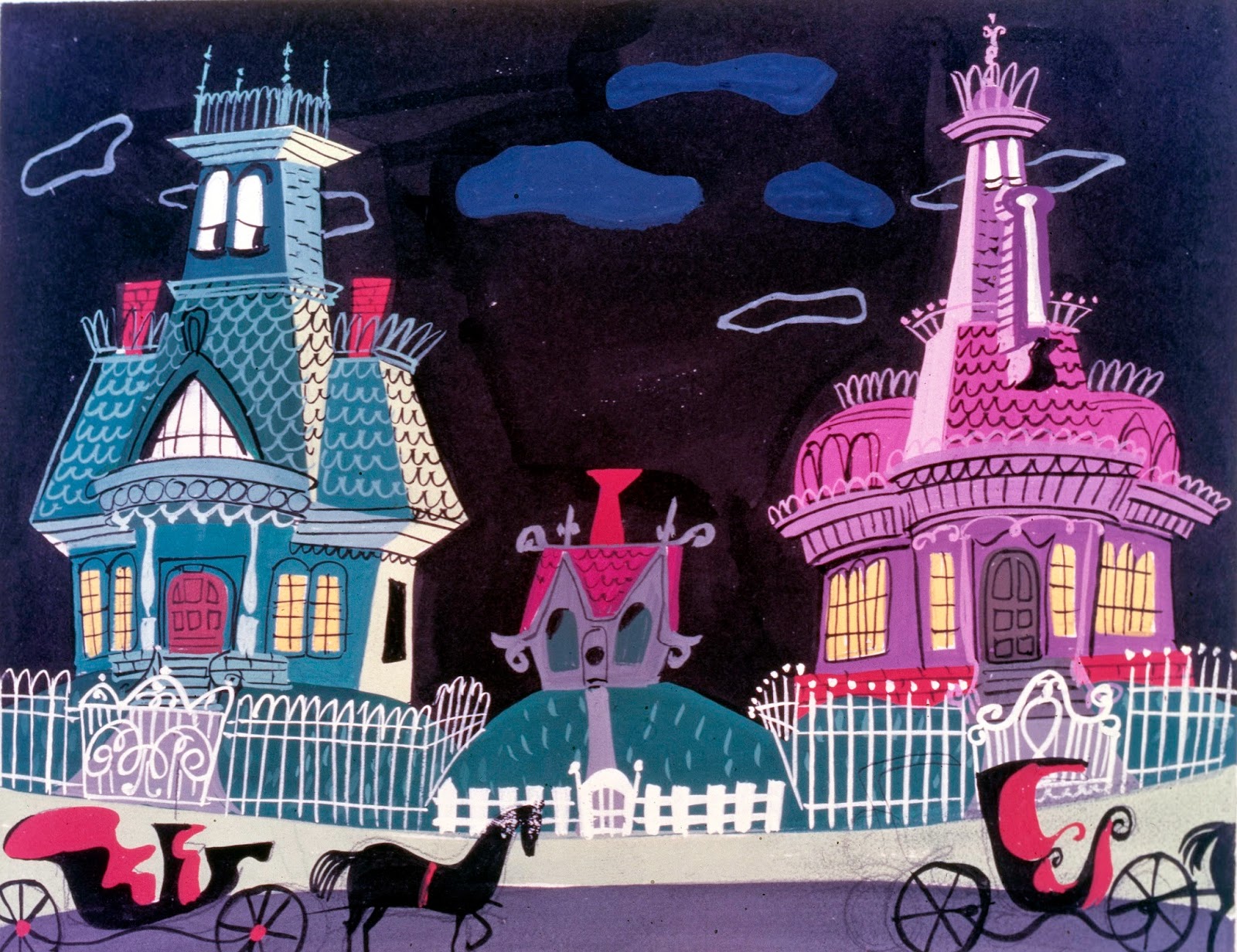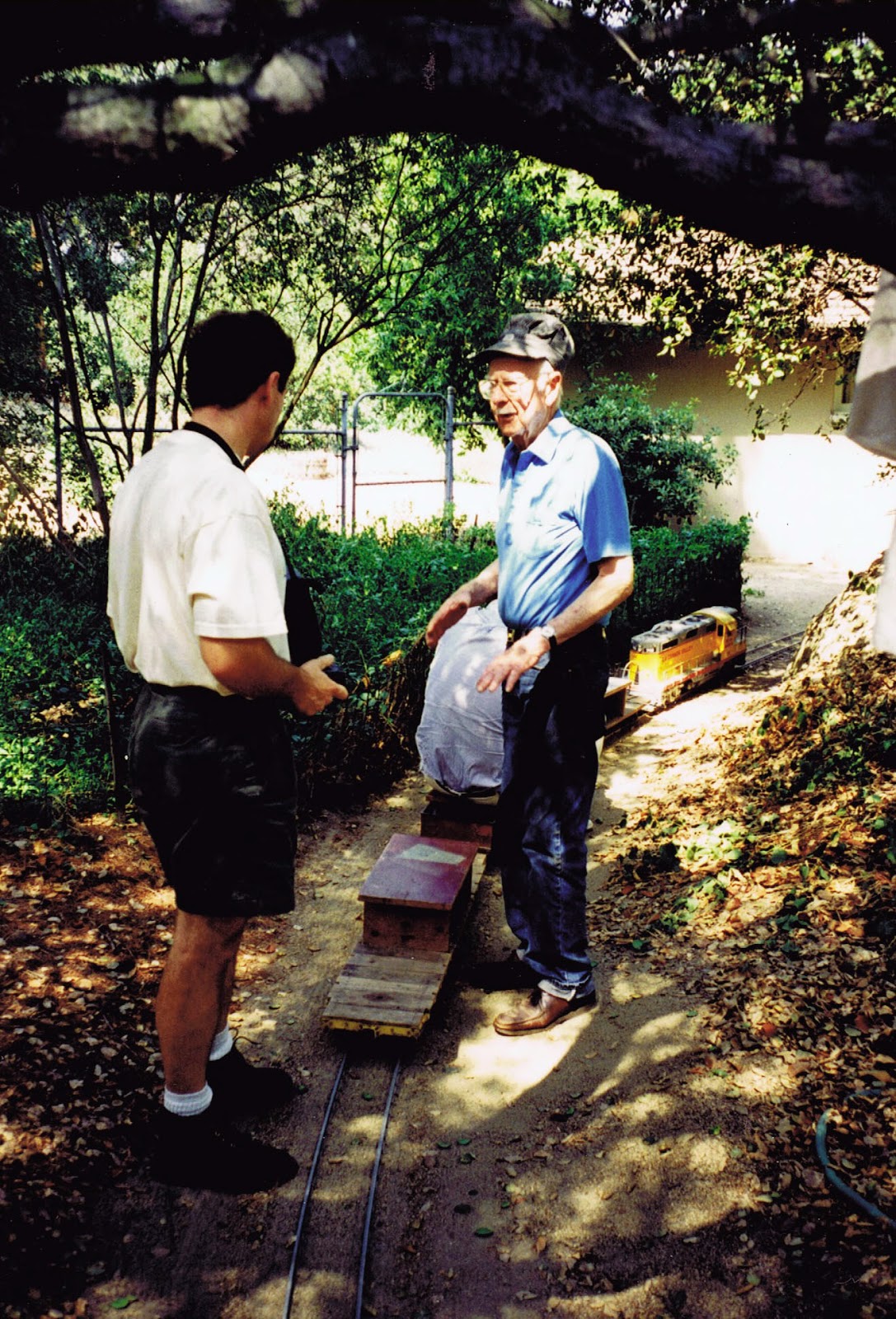Saturday, November 29, 2014
A Milt Kahl Autograph that almost didn't happen
During one of my visits to see Milt in Northern California I brought along a Colonel Hathi sketch, I had just purchased. Milt didn't animate any scenes with elephants for The Jungle Book, but he was involved with their designs.
When I asked him to sign the sketch, Milt hesitated. He said he doesn't like the way he drew the tusks coming out of Hathi's upper mouth. He used his fingers to describe the way it should have been drawn. "No, I don't want to sign this." My facial expression must have been utter disappointment, because that's when his wife Julie, who was also present, spoke up: "Oh Milt, come on."
He then picked up the rejected drawing and autographed it. I was happy!
It is unbelievable to realize how critical Milt remained long after leaving animation behind. I could never get an on the spot drawing out of him. At that stage in his life he felt that he wasn't up to his old standards anymore. I certainly respect him for that, and feel privileged that Milt took the time to meet with me.
Wednesday, November 26, 2014
Fred Moore Mickey Roughs
This sequence of drawings was done for a scene from an unproduced Mickey Mouse short film. My guess is that they date back to the early 1950s. Fred might not have been at the peak of his form anymore, but his work still showcases an exuberant joy for animating Disney's iconic character. When he took over from Ub Iwerks, there is a sense of ownership and self expression. Fred Moore was the right guy at the right time in the right place.
Just imagine what amazing work he still would have produced, had it not been for addiction and the tragic car accident on November 23, 1952.
But the work he did during his lifetime speaks for itself. It is a celebration of the human spirit, and therefor a celebration of life. Love on paper. This man deserves a book, filled with his art that continues to inspire generations. It will happen.
Just imagine what amazing work he still would have produced, had it not been for addiction and the tragic car accident on November 23, 1952.
But the work he did during his lifetime speaks for itself. It is a celebration of the human spirit, and therefor a celebration of life. Love on paper. This man deserves a book, filled with his art that continues to inspire generations. It will happen.
Monday, November 24, 2014
"Madame Medusa's Pawn Shop Boutique!"
Milt Kahl animated this line of dialogue, as Medusa is sitting down on her desk while she answers the phone. Initially upset at this late phone call, she then fakes a friendly attitude toward the caller.
The rough drawing above is unfinished and was retrieved from Milt's trash bin (Crazy...I know).
I LOVE the composition of this pose! Just-look-at-this-drawing!
It is a graphic masterpiece, full of personality. Her right hand is still leaning on the chair's back, before settling on her hip. As I said before, Medusa's body type is utterly unconventional in Disney Animation and it shows how Milt Kahl constantly challenged himself by inventing new, sophisticated designs.
Here are copies of a few key drawings from the final scene. Stunning crisp facial expressions!
I had a wonderful time at CTN. Met so many great, enthusiastic people.
It was a special pleasure to talk to several young folks from Russia about my film. I will be in touch with you guys.
New York was a lot of fun, too. Aladdin on Broadway is spectacular, I highly recommend the show.
Another great musical was Kinky Boots. Go see it!!
Sunday, November 16, 2014
Jonathan Freeman
I will update my blog again toward the weekend. In the meantime I am off to New York to see my friend Jonathan perform Jafar on stage. As some of you might know he originated the role for the animated feature Aladdin...a while ago. Can't wait.
When I get back I hope to see some of you at the fabulous CTN EXPO.
Friday, November 14, 2014
Milt on Human Reaction
I am not sure if I recall this Kahl statement from one of his lectures, or if he told me in person.
It is an interesting comment on how a person reacts to, let's say a loud sound, at a moment when he or she is focusing on something in particular. In other words, being interrupted.
Milt said he would hate to see the animated character turn right away toward the direction of the disruption. That way the audience is missing a "thinking beat".
His way of dealing with a moment like this one is having the character straighten up (after a squash), change expression according to how the character feels, THEN animate the head turn in the direction where the disturbance came from.
And that's exactly what Medusa does when she hears a loud noise coming from upstairs, where her alligators are chasing Bernard and Bianca.
Medusa is studying a map before reacting to the commotion. Notice how Milt always keeps her eye in the clear among the messy hair shapes. The expression change happens at the beginning of her head turn, where the audience can see it clearly.
Of course there are exceptions to this "rule", but before breaking it, it's useful to know the rule.
Looking at these drawings, it is obvious that Milt's Medusa is a revolutionary invention.
It is an interesting comment on how a person reacts to, let's say a loud sound, at a moment when he or she is focusing on something in particular. In other words, being interrupted.
Milt said he would hate to see the animated character turn right away toward the direction of the disruption. That way the audience is missing a "thinking beat".
His way of dealing with a moment like this one is having the character straighten up (after a squash), change expression according to how the character feels, THEN animate the head turn in the direction where the disturbance came from.
And that's exactly what Medusa does when she hears a loud noise coming from upstairs, where her alligators are chasing Bernard and Bianca.
Medusa is studying a map before reacting to the commotion. Notice how Milt always keeps her eye in the clear among the messy hair shapes. The expression change happens at the beginning of her head turn, where the audience can see it clearly.
Of course there are exceptions to this "rule", but before breaking it, it's useful to know the rule.
Looking at these drawings, it is obvious that Milt's Medusa is a revolutionary invention.
Wednesday, November 12, 2014
Dancing Monkey
Some animators are great handling scenes that involve dancing. Eric Goldberg is one of them, so is Ken Harris and Ollie Johnston. Frank Thomas had the analytical mind to bring dance to life with unexpected moves and an absence of formulas.
This little jewel of a scene from The Jungle Book shows his extraordinary talents as an animator who knew about eccentric dance movement and how to break it down within twenty-four drawings per second. I LOVE this scene. All drawings are keys, there are no in-betweens. No live action reference was used, Frank pulled this one out of his head. Something is moving in an odd configuration at all times, yet as a whole the scene looks natural and very entertaining.
This is why I love animation, why I adore Frank Thomas and why I keep trying to express myself through moving drawings.
The pencil test with sound loops twice. It is well worth studying.
Sunday, November 9, 2014
The Little House
This is an unusual Disney short film from 1952. It brings to life the most rigid objects imaginable, buildings. I love the story and art direction, I’m not so sure how much fun it would be to animate a country house and city skyscrapers, call it a challenge.
Les Clark, Marc Davis and Clair Weeks (who was also Marc’s Clean Up assistant) met that challenge, and by treating windows as eyes and the front door as nose and mouth they found a way to humanize architecture.
Mary Blair did a lot of beautiful color sketches, and the final art direction pretty much maintains Mary’s vision.
The story about urban sprawl is based on the 1942 book with the same title, written and illustrated by Virginia Lee Burton.
It's interesting to compare the Blair sketch to the final background art.
Here is the youtube link to the film:
Friday, November 7, 2014
Pesky Fauns
...could be the title of this illustration by Heinrich Kley. It's a little unsettling to see these Fauns treating the old Centaur so disrespectfully. Maybe the situation is part of a mythological story.
What is wonderful to observe is Kley's incredible knowledge of anatomy, and how he applies it to fantastical creatures. Half human-half horse or half human-half goat, his depictions always make us believe that if those things really existed, that's exactly what they would look like.
Most of Kley's fantasy drawings and paintings were produced about one hundred years ago, but they sure don't look dated. Particularly for artists who draw animation, his body of work remains an important source of inspiration and influence.
Wednesday, November 5, 2014
Woolie, Tramp and the Rat
Woolie Reitherman was an expert in animating action sequences such as fights and chases.
In Lady & the Tramp he drew the street dogs as they threaten Lady before getting into a brawl with Tramp. But Woolie also animated the rat fight toward the end of the film.
I love what he once said in an interview about animating aggressive confrontations. He felt that among all the action involved there should be a moment or two of pause. The opponents freeze for a second to catch their breath or re-evaluate the tense situation.
I see this kind of stuff over and over again in wildlife films, where two lions battle furiously, then stop as they stare at each other. Then all of a sudden the altercation starts over again.
This is one of the reasons why good old Disney Animation feels so believable and engaging, the best footage is always based on observation of real life.
Now I sound like Eric Larson teaching us the philosophy of Disney Animation way back.
Woolie was a hell of an animator!
Drawings Disney/howardlowery.com
Monday, November 3, 2014
More Ollie
These photos were taken sometime during the early 1990s, when Ollie had invited friends and their families to ride on his model train. The tracks went around the house and beyond, and Ollie enjoyed sharing his hobby train regularly. Even Walt Disney stopped by sometime in the late 1950s for a test ride. I remember what a fun Saturday afternoon this was, riding the train and watching Ollie turn into a kid.
I am sitting at the end of the train, while Hans Bacher is trying to film the trip from a low camera angle.
A few key drawings from one of Ollie's last animation assignments. For Robin Hood he was mostly responsible for Prince John and Sir Hiss, but he animated other characters as well. Here Little John questions Robin Hood's philosophy: "You know something, Robin, I was just wondering. Are we good guys or bad guys? You know, I mean, our robbin' the rich to feed the poor."
Look at how light and delicate these drawings are. No animator's fight to achieve the right poses.
Pure intuition, that's why Ollie always had such an impressive output for footage. He got that from his mentor Fred Moore.
Subscribe to:
Comments (Atom)








